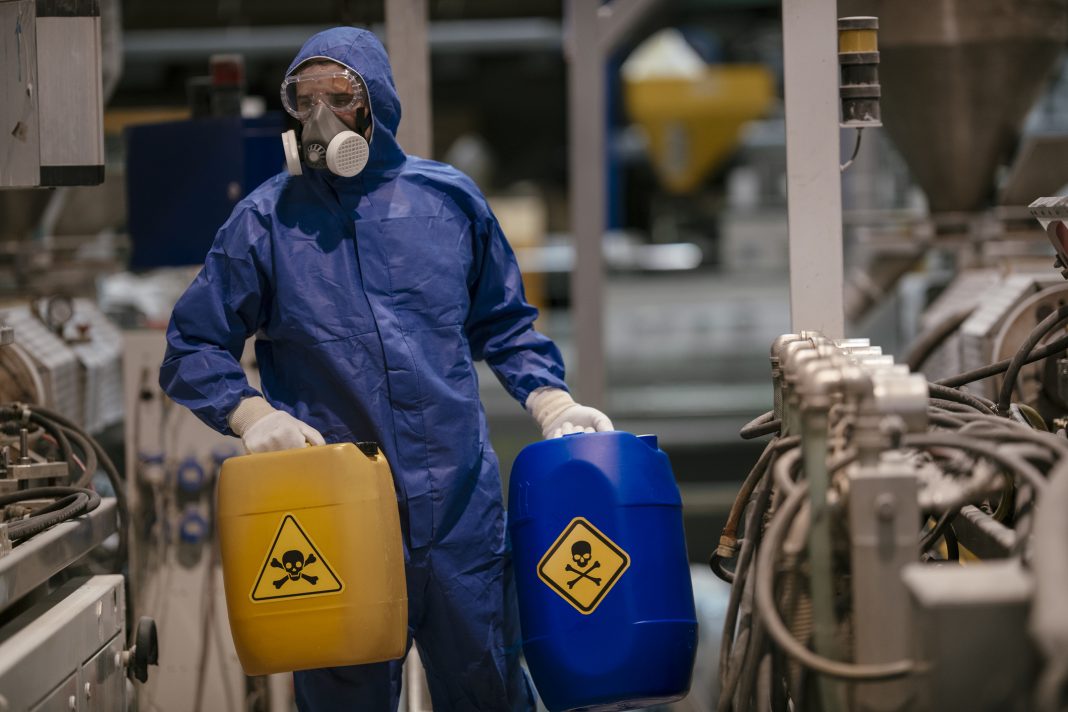Despite the immense potential benefits of nuclear power, many people are concerned about the dangerous radioactive waste, or radwaste, it generates
Even though the safety and security technology solutions are consolidated, the main issue for the experts is not technological but rather sociological: can we convince the general public to accept a radwaste storage site if we do not first convince ourselves? The question is not trivial at all.
Why radwaste monitoring?
In most radwaste storage sites, the drums are periodically inspected by operators making use of sophisticated tools and detectors, while a few specific radiation detectors and dosimeters installed in several locations keep control of the local environment.
This method has at least two disadvantages: (i) the local ambient monitoring is limited to a few positions; (ii) it requires people moving around in a potentially dangerous environment.
As for security, human surveillance is and will still be necessary along with cameras, but this is also one of the main concerns when considering the risk of insider threats, especially in light of the increased risks of terrorism.
Nowadays new technologies have made it possible to develop low-cost systems capable of monitoring the penetrating radiation coming out of each single spent nuclear fuel cask or radwaste drum, by means of simple, compact, and effective counters for the detection of gamma rays and neutrons. These developments aim at getting rid of paper and replacing it with automatically collected data and online real-time digital twins. In particular, two new detector technologies, named SciFi and SiLiF, have been developed and successfully tested on radwaste from the very low to the highest activity level.

The SciFi gamma counter
The gamma-ray detectors present on the market are typically expensive and often bulky, therefore they are not suited for finely distributed monitoring. The required sensors for such a task should be slim, inexpensive, robust, easy-to-use and reliable. These guidelines led to the development of the SciFi gamma radiation counter, based on a plastic scintillating optical fiber and two tiny but efficient modern photosensors called Silicon Photo Multipliers.


The SiLiF neutron counter
The detector required for neutron monitoring purposes must be simple, compact, robust, operated at low voltage, and reasonably inexpensive. The effort to fulfil all of these requirements led to the SiLiF detector as a viable alternative to the existing ones. It consists of a double-sided silicon diode coupled on both sides with a layer of 6LiF acting as a neutron converter. Indeed, 6Li has a large cross-section for neutron capture and immediately decays into two energetically charged particles, namely 3H and 4He, which can be detected in the diode as the signature of a neutron interaction.
Monitoring tests for SciFi and SiLiF detectors
Throughout ten years SciFi and SiLiF detectors have been thoroughly tested and characterized in the lab and with radwaste and spent fuel in real storage sites. The measured SciFi gamma counting rates for the different waste types range from a few to several hundred counts per second (cps).
As for neutrons the measured SiLiF counting rates range from 10-6 to 200 cps, proving to be gamma blind and thus capable of spotting the presence of tiny amounts of actinides like plutonium, uranium, and americium. Recently a prototype system with 16+16 detectors has been installed around four radwaste drums, showing a very stable behavior but also showing that any activity around the drums, like a small displacement of a detector or of drums, is quickly detected. This can also represent a valuable tool for security.
The future of nuclear waste
In the coming years, nuclear decommissioning will become a more and more relevant activity, as most of the 422 nuclear power plants all over the world are 40-50 years old. This implies that new radwaste storage sites will have to be put in operation with consequent increasing needs of safety and security. The implementation of a modern monitoring architecture could represent a relevant step in the direction of better acceptability of the repositories for the population, as well as an additional and transparent tool both for the control authorities and for the general public.

References
- L. Cosentino et al. SiLiF Neutron Counters to Monitor Nuclear Materials in the MICADO Project. Sensors 2021, 21, 2630.
- L. Cosentino et al., Gamma-Ray Counters to Monitor Radioactive Waste Packages in the MICADO Project. Instruments 2021, 5, 19.

This work is licensed under Creative Commons Attribution-NonCommercial-NoDerivatives 4.0 International.


